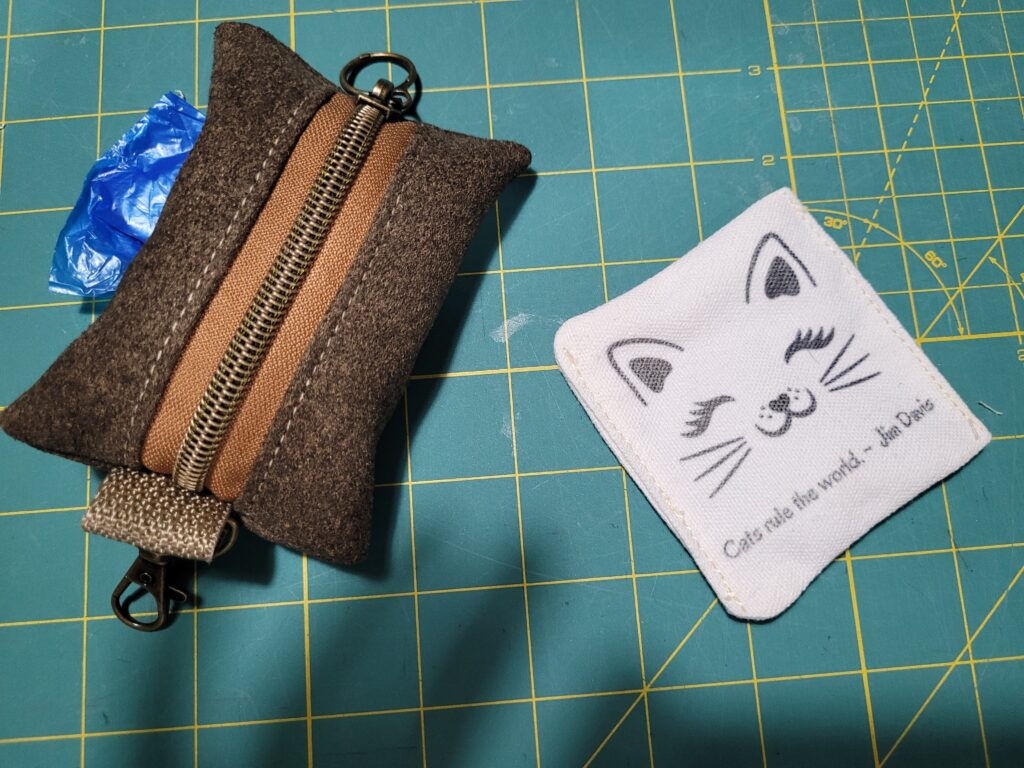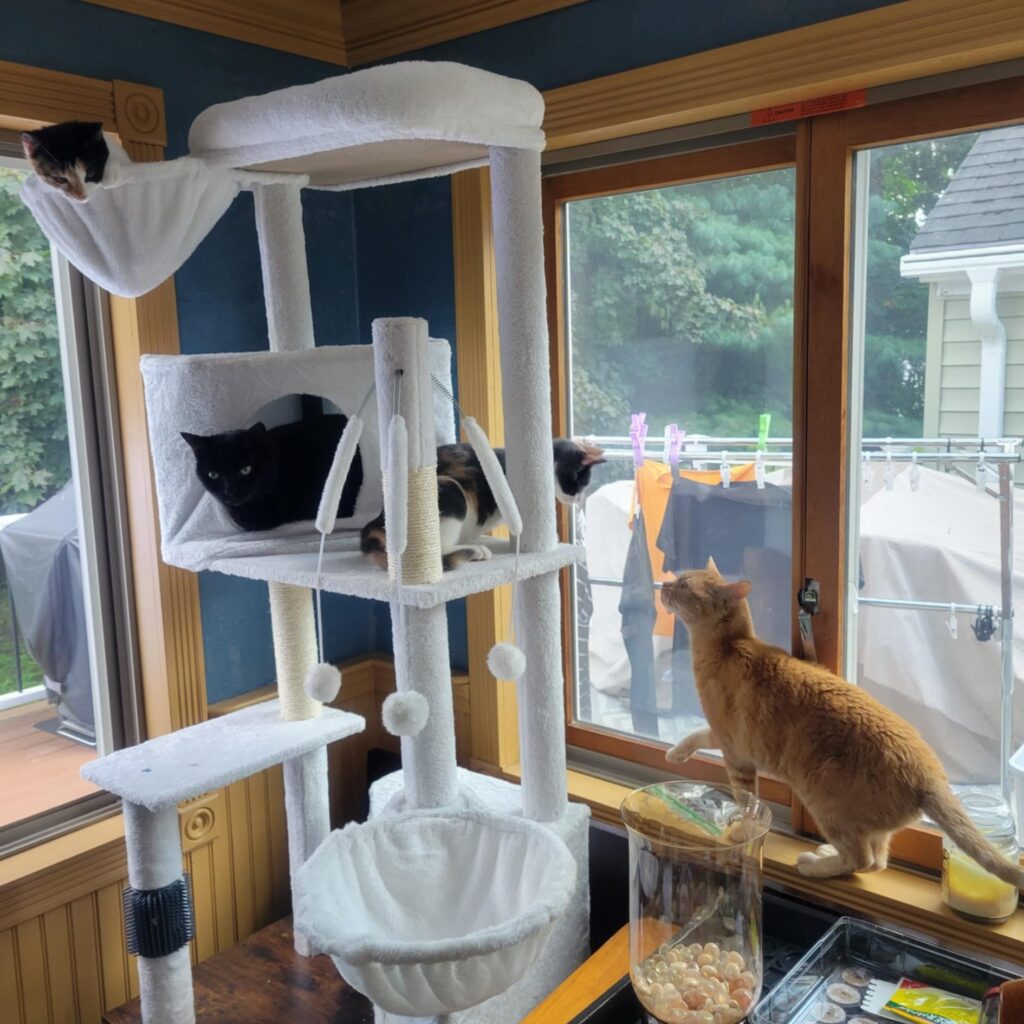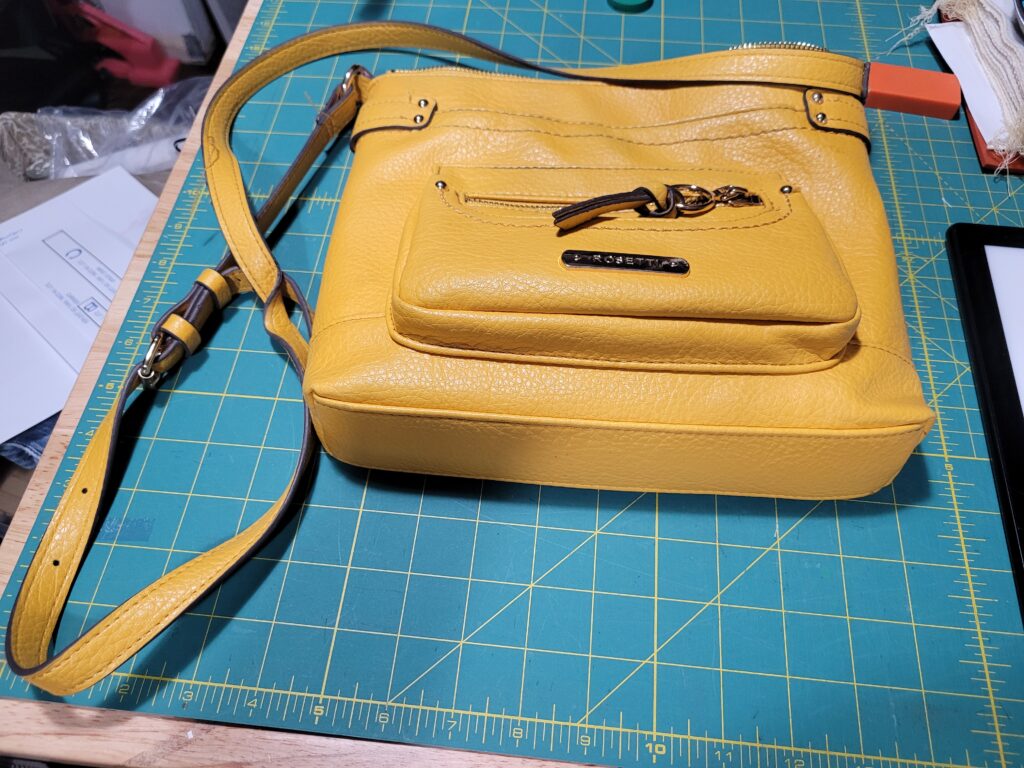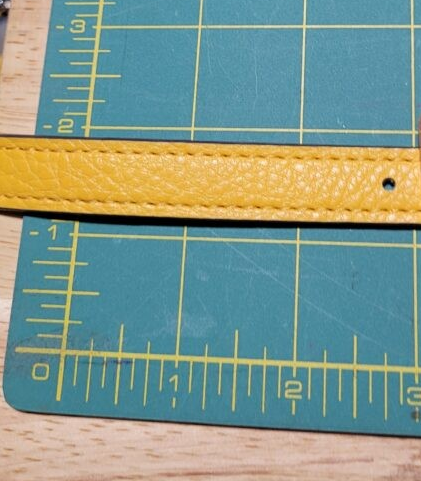New Products
At the last craft fair, a visitor suggested I make doggie poo bag holders. This is an item suggested by one of my favorite sewing vloggers, my online mentor (unbeknownst to her, of course) and inspiration, Christine of Christine’s Home Affairs also had an instructional video on how to make these in batch. These are now in production. While doing that, I noticed a small canvas catnip bag on the floor, showing every bit the love bordering on slavish adoration our cats had given it. So, I’m also making those. These will be available at my next craft fair, November 16th, at The Residence at Penniman Hill in Hingham, MA.


The trick, of course, will be sneaking the catnip bags on the left past the four catnip junkies on the right. I’ll report back on how that goes.
Bag Injuries
The picture below shows a purse I fell in love with at a local department store. Please note: I did not make this bag. This is a mass-manufactured, department store item. The color is one of my favorites and it had loads of pockets and compartments, which I love to have in a bag. It’s plenty big enough. But I had to stop using it. Can you tell why?


Well, let me give you a hint. Look at the handle. It’s less than an inch wide. Yet the bag size allows for a lot of stuff.
After using this bag daily for about a month or so, I started to develop upper arm and shoulder pain that became so severe I couldn’t move my left arm. Nightmare scenarios played in my mind: stroke? heart attack symptoms? torn ligaments, muscles? bone disease?
No. The bag did it.
~ Short Story Long … ~
Before I took a dreaded visit to the intersection of fatphobia, ageism and sexism that is American Health Care right now (oops, did I use my outside voice? I’m not sorry), I took a long look at everything I was doing physically. This has helped me in the past. I decided to stop using that purse and go to either very small cross-body bags (that could fit my phone, a pen, and a reduced wallet with ID and cash only) or larger totes with more weight distribution and wider straps. Almost magically, I could move my arm again.
Interestingly, this was not my first bag injury in a lifetime. Thankfully it was reversible as well.
After several discussions with my husband, who has an education in engineering, my theory was that there was a design problem with the purse: it had the capacity for a goodly amount of weight, but when weighed down, that narrow strap dug into my shoulder causing some kind of pinched nerve or stressed muscle that caused the pain.
In short, the bag is designed to hold more with a handle that will cause injury with even remotely half-capacity. I don’t carry much of stuff, relatively speaking. I’m not a baby bottles, water bottles, books and all kind of woman. So, for me, this was a design flaw I didn’t notice at the time. I do now.
~ Why you Should focus on Strap Width and bag shape ~
Medical information holds this out, citing stress on the trapezius muscle on the top of the shoulder. The Center for Spine and Orthopedics in Colorado and Wyoming, published a 2013 article about this very thing, recommending wider straps.
“The wider the strap, the better,” Dr. Hayden says, because it distributes the weight over a wider area. This protects the delicate structures in the shoulder where your nerves go from the neck into the arm. “That’s a pretty delicate area in terms of potential injury from heavy weight,” he says.
I understand that the source I’ve just cited is a private practice and not an academic study, but fear not friends, I have an academic study. I’m sure everyone’s thrilled. Apparently, the issue is important enough for the National Institute of Health (NIH) to get in on the game, paper-publishing wise, with a paper whose title is too long to mention here so I’m just giving the link. The study compared shoulder bags, backpacks and handbags and their effects on the body. I did not sit with a cup of cocoa and read the entire study. I’m also not going to do a deep dive into the methodology. I still have to catch up on Hollyoaks. However, one of their illustrations, Figure 6, is pretty interesting as it compares the force of all three bag styles, specifically “paraspinal muscle force in neutral position.” Still waiting to find the definition of “neutral position.” I don’t have permission to use the image, which is information-dense, so I’ll summarize the basic suggestions.
~ Recommendations ~
From my reading, these are the authors’ takeaways:
- Backpacks have the least force and the weight is evenly distributed. According to the authors, “showed the best balance of muscle force in the left and right sides.”
- They recommend: “changing the load side of the shoulder bag or handbag during bag‐carrying activities would protect muscles from continuous high tension, which would decrease the risk of muscle injury.”
- For children, bag weights over 15% of body weight “was deleterious to the muscoskeletal system in children.” In other words, if your kids’ school sends them home with enough books to give a body builder a workout, push back on that school for your kids’ sake.
- Switch sides with your bag. I had back pain in college from slinging my heavy backpack on my left shoulder all the time. My bag was always on the left, I got sciatica, so this is true.
There was also a comment I want to go back and digest, but that reducing the “load size” might help relieve some muscle tension but wouldn’t “reduce the burden of the intervertebral discs.”
My own takeaways:
- I don’t use narrow straps in the bags I make because of this incident.
Only I ever make small cross-body bags that are too small for many items will I use a narrow strap, and even then probably one inch. - I don’t purchase medium-sized or large bags with narrow straps.
- I regularly “purge” my purses and bags and switch bags around (backpack, tote or small crossbody). My theory is that my body won’t be continually stressed by the same heavy weight on one body point on a daily basis. I know women (of my and my mother’s generation) who regularly use different bags, but I never have. I’ve usually only used a day-to-day and special evening bag. Now I keep a few and switch around.


Leave a Reply